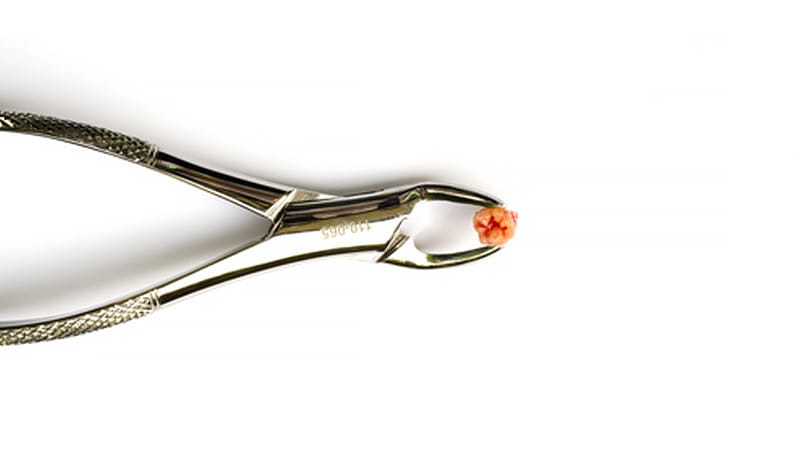
BACKGROUND Mr F attends his dentist – Dr K – complaining of a tender upper premolar at UL4. On examination it is found that the tooth has fractured. Six months previous Dr K had root-treated the tooth which had been giving Mr F problems for the last couple of years. It had been filled twice but with recurrent infections requiring antibiotics.
Five days later the patient re-attends the practice and the two root canals at UL4 are located, guuta-percha (GP) removed and dressed with Ledermix but after two days Mr F is back in the surgery with the tooth now very tender to touch. The canals are opened and blood is found to be oozing from the buccal canal. Dr K leaves the tooth open to drain and prescribes antibiotics.
A few weeks later Mr F calls in sick from work with an “agonising” toothache and makes an emergency appointment with Dr K. The dentist informs the patient that the tooth is chronically infected and needs to be extracted. This is done with the patient’s consent and the procedure is routine with no complications noted in the patient records. No post-extraction radiograph is taken.
Two years pass and having moved to a new town Mr F registers with a local dental surgery and attends complaining of pain around UL4. The new dentist takes a radiograph and this reveals the presence of a retained root at UL4, which has become infected. A further appointment is made and the root fragment is surgically extracted.
Six months later Dr K receives a letter of claim from solicitors representing Mr F alleging negligence in the treatment of the patient’s tooth. In particular the letter states that the dentist failed to protect the root-treated UL4 by means of an onlay or crown to prevent fracture. It further alleges that the dentist failed to record the fracture of the root and to inform Mr F what had happened. Nor did Dr K take a post-extraction radiograph and carry out remedial treatment to remove the retained root, or refer appropriately.
ANALYSIS/OUTCOME Dr K contacts MDDUS and an adviser reviews the letter of claim and patient records along with the dentist’s account of the treatment. An expert report is commissioned from a GDP and lecturer in restorative dentistry. The expert offers an opinion on each of the allegations.
In regard to failure to protect the root-treated tooth from fracture with an onlay or crown he states that the need for such a measure is determined by the size of the cavity in the tooth and degree of occlusion. In his opinion there is no evidence to conclude UL4 was at risk of fracture so it cannot be said that placement of an onlay or crown was essential.
The expert reviews radiographs taken by Mr L’s current dentist and notes the presence of a retained root prior to its extraction. Nothing in the notes recorded by Dr K shows that he was aware of the retained root. The expert expresses the view that there was no breach of duty in a root fracturing during extraction and remedial treatment being required. Such an occurrence is always possible even when appropriate skill and care is taken during an extraction.
However, he believes the size of the root fragment was such that Dr K should have been aware it was there and further confirmed by a radiograph. A decision could have been made then either to remove the fragment or delay for a surgical procedure to be carried out on a later day either by Dr K or with referral to a specialist. The expert states that in his opinion this failure did constitute a breach of duty of care.
In regard to causation the expert states that in his view there is no claim in regard to the loss of UL4 or for the value of any prosthetic replacement. But the need for a later surgical procedure and the discomfort associated with this and the infection caused by the root fragment could have been avoided.
In view of the potential weaknesses in defending the case MDDUS decides with the agreement of the dentist to settle the claim for a small amount with no admission of liability.
KEY POINTS
- Ensure that any extracted teeth are carefully examined for potential retained fragments.
- Add clinical justification in the notes for all key clinical decisions.
- Complications during clinical procedures do not necessarily constitute negligence if appropriate skill and care have been taken.
This page was correct at the time of publication. Any guidance is intended as general guidance for members only. If you are a member and need specific advice relating to your own circumstances, please contact one of our advisers.
Save this article
Save this article to a list of favourite articles which members can access in their account.
Save to library